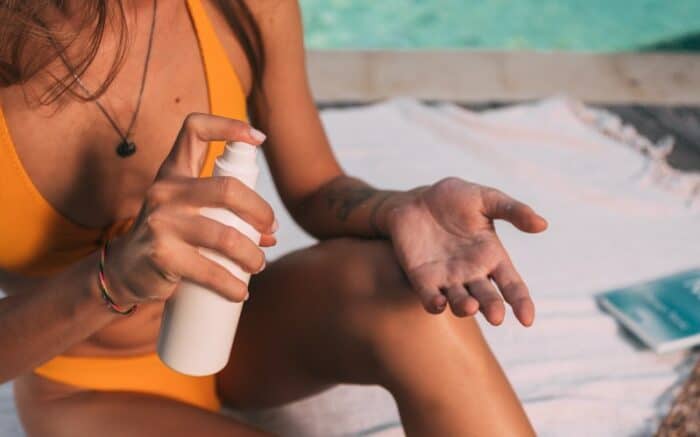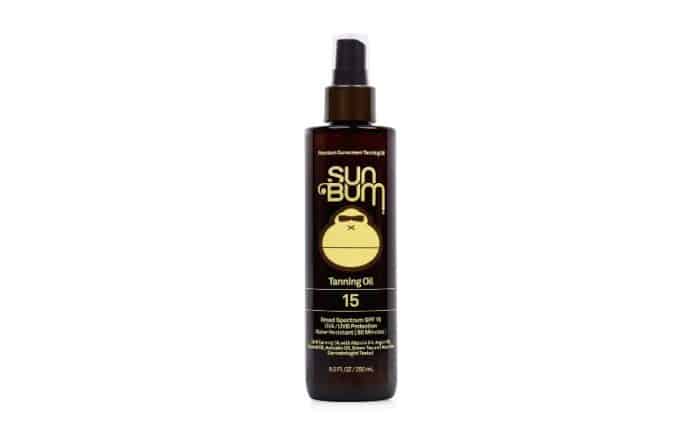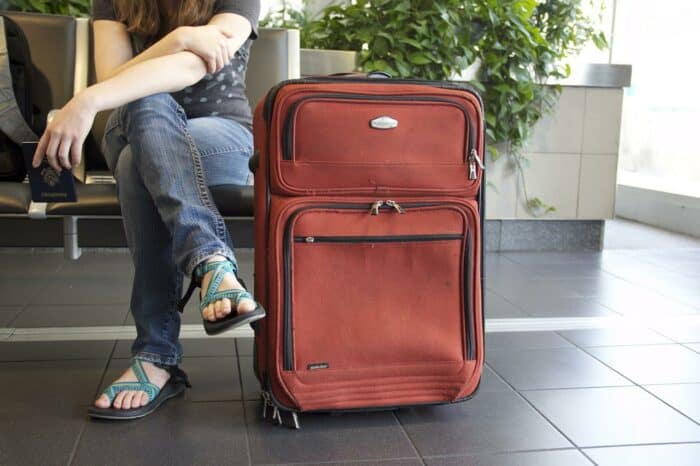How Does Tanning Oil Work?
These days most of what we hear about sun exposure is about the dangers. Unprotected sun exposure can lead to burns and skin cancer so you need to be careful. But there are also tanning salons all over the place so there’s clearly a market for tanning. If you like that warm, summer glow from a nice tan then you probably have an interest in making sure you get the best, safest, overall tan you can get. And that may mean you’re interested in a good quality tanning oil. But how does tanning oil work? Here’s everything you need to know before your next tan.
What is Tanning Oil?
The name “tanning oil” is not code or a trick. These are all real, oil-based substances that you apply to your skin. They’re frequently coconut oil based btu almost any oil could be used. Other popular options are walnut oil, avocado oil, sesame oil, and so on. Could you use plain old vegetable oil from your kitchen if you wanted? In a pinch, yes. That said, true tanning oil will have other ingredients in it as well to help keep your skin moisturized, improve the scent, and filter some of those harmful UV rays. Many contain bronzers which are agents that help you get a darker, smoother color across your skin.
What are Bronzers?
There could be a number of bronzing agents in a tanning oil that help increase a tan. Some bronzers require no sun exposure at all. You’ll see people getting spray tans that use these chemicals. They simply need to be applied evenly and allowed to dry. Over time, they will naturally darken to provide an even, full-body tan effect. However, some people dislike these because they can look very artificial. Cheaper ones can give you an almost orange color that many people find off putting.
Other bronzers included in tanning oil are things like dihydroxyacetone, or DHA. Although it sounds potentially dangerous and artificial, it’s actually a sugar that comes from beets and sugar cane. Have you ever caramelized sugar when you were cooking? The concept is actually very similar. The sugar reacts with various enzymes in your skin as you tan and produces a richer, darker color.
The effect of a bronzer is very limited and will only penetrate the surface layers of your skin. Over several days, as your skin renews and heals, the affected layer of dead skin cells will slough off as you bathe and go about your business and the bronze color will fade away.
Does Tanning Oil Stop UV Rays?
So, does tanning oil protect your skin? No, it doesn’t. In fact, tanning oil does the opposite. Unlike tanning lotions, tanning oil works by focusing those UV rays so that they are able to penetrate your skin more easily. This makes your skin produce melanin. Melanin is the pigment that darkens your skin tone, thus it makes you get darker, faster. So while the concept is simple, you can also see how you need to be careful.
Because tanning oil actually focuses UV rays, you run the risk of damaging your skin much sooner when you tan using tanning oil. That could be a burn or, over the long term, increased risk of skin cancer. That’s why you want to be as careful as possible.
Many tanning oils will include ingredients like moisturizer or green tea under the guise of blocking UV rays but these products have not really been properly studied for that function. Green tea, when ingested, may prevent some UV radiation damage, but it’s not the same as sunscreen on your skin.
Tanning Oils vs Sunscreen
If you want to prevent sunburn then you need sunscreen. Basically, sunscreen and tanning oils are the opposite of one another. Keep that in mind when you look to buy some. Tanning oil can’t work if it protects you from UV rays. Some tanning oils will offer a sun protection factor, or SPF, on the label, but it’s very low and essentially useless. Tanning oil only works by focusing, not blocking, UV rays. So, sadly, you can’t both protect your skin from harsh UV rays and the damage they cause while also using them to get a tan. It’s one or the other.
Do Tanning Oils Work with Sunscreen?
Because of how tanning oil and sunscreen both work, this is not a good idea. Remember, tanning oil magnifies UV rays while sunscreens either absorb or block them. They are doing opposite jobs. Plus, if you try to mix them, the tanning oil will likely interfere with the composition of the sunscreen rendering it ineffective. As a result, you will just make both products work poorly. It would be messy and mostly a waste of money.
Is Tanning Oil Safe?
Tanning oil, by itself, is not dangerous. Most will probably give you some very moist skin although you should be cautious with your clothes. Oil stains are hard to get out. Likewise, too much tanning oil can cause a danger from slipping.
In terms of how you use it and its intended purpose, tanning oil can’t really be considered safe without added protection. It’s increasing your exposure to UV radiation which we know is a danger. So, if you use tanning oil, you are increasing your risks of skin cancer. Those that do have a small SPF factor included are often not designed to prevent exposure to both UVA and UVB radiation, which can be a problem as well. That radiation causes mutations in your skin cells which is what skin cancer is.
If you still want to use tanning oil, please do so as responsibly as you can. That means being conscious of how much sun exposure you’re getting and keeping it as limited as possible. Remember, the tanning effect increases over time both naturally and thanks to bronzers. So even if you think you’re still too pale, you can get out of the sun and your skin will continue to darken for some time even when no longer exposed.
You will burn much faster than normal with tanning oil than you would with nothing. So if you can normally lay out in the sun for 30 minutes with no ill effect, it could be much shorter with tanning oil applied.
Are There High SPF Tanning Oils?
SPF is something that typically protects you from UVB rays. Those UV rays can be very damaging to your skin and nearly every dermatologist and medical body recommends you use products with at least SPF 30 to go out in the sun for any amount of time at all.
These days there are some tanning oils that include higher SPF numbers, but they are more rare. Some offer 30 and even 50. These are the best options if you want to enjoy the facts of a tan while lowering your risks of exposure to harmful UV rays.
Many brands of tanning oil will offer an SPF of 6 or even 4. While I can’t speak to the quality of the ingredients in an oil like that, I can say that any dermatologist will tell you an SPF that low is pointless. It just won’t help at all. It’s like when a bag of potato chips advertises being gluten free, even though potatoes never had gluten to begin with. They’re trying to trick you into thinking the product is healthier and safer than it really is by offering something pointless to you. So don’t fall for it! If you want a real SPF factor and the protection that comes with it, you want to try to find SPF 30 or higher.
How to Use Tanning Oils
Applying tanning oil is pretty straightforward. It’s best applied outside to prevent dripping that could ruin your clothes or carpets. Start by pouring a small amount into the palm of your hand then spreading it evenly across your arms, legs, face and exposed skin that you’re looking to get tanned. Smooth it over your skin to get an even layer.
Ideally you want to make sure you get an even layer across your whole body. If you’re just doing something like your arms, face and neck, make sure you’re fully covering exposed skin. You don’t want under your chin, around your ears, or parts of your body normally covered by clothing to peek out and be a different color when you’re finished.
The tanning process is one that takes time. Most tanning oils and tanning lotions should get you where you want to be with a single application in a day. However, if the sun isn’t all that bright you may find you need to reapply after about 3 or 4 hours of being out and about. This would only be likely if you’re being active, however. If you’re just laying in the sun, it will probably not be necessary.
How to Clean Up Tanning Oil
Oil is harder to wash than lotion, that’s a fact. Oil and water, as you know, don’t mix well. And if you’ve been in the sun for a few hours covered in oil, you’ve likely absorbed a waterproof layer that may make you feel greasy for the rest of the day. You need a reliable way to clean up so you feel clean and don’t leave oil marks on the furniture.
The best method for washing up after using tanning oil is to exfoliate. Use an abrasive body wash to help get that top layer of skin off and take the oil with it. BUT! Don’t forget, you’ve just been out in the sun. If you got too much of a tan your skin may be too sensitive for an exfoliant. There’s no need to hurt yourself here.
Normal body wash with an exfoliating loofa or scrubby can work, too. You can control the pressure better and be more gentle overall. And if that’s too harsh for you, there are still other options. If your normal body wash isn’t cutting through the oil, try a spritz of vinegar. Vinegar and oil repel each other as you’ve no doubt seen in bottles of salad dressing. It won’t damage your skin, it’s not toxic, and it may be the extra trick you need to get the oil to slip away. Then just shower as normal and problem solved.
The Bottom Line
Tanning oil can give you a great overall tan if you use it responsibly. If you want that perfect, golden look make sure you’re buying a high quality product and make sure it has the SPF you need. Be careful not to spend too much time in the sun and, as always, stay safe and have fun.
Categories: Beach


















